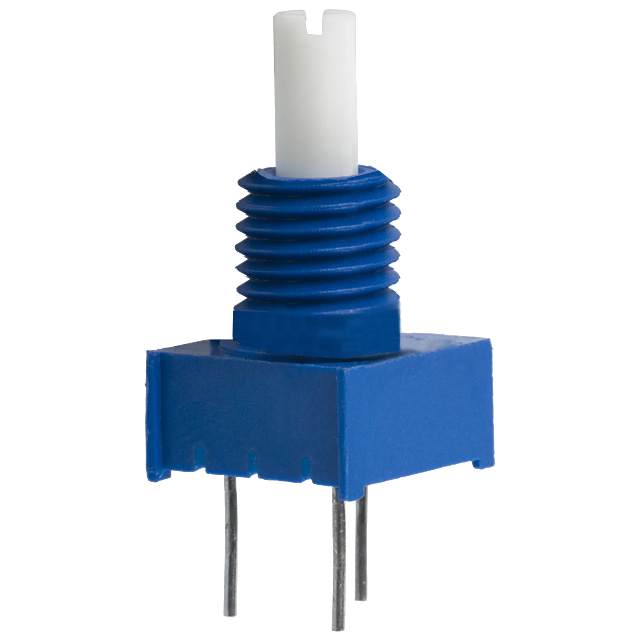Circuit Solver: Potentiometer
1) Potentiometers
A potentiometer (or pot) is a three-terminal device whose electrical properties depend on the angle of its mechanical shaft. We can think of a potentiometer as being made up of two resistors, whose resistances sum to some value R_p, and whose resistances vary with the angle of the shaft, which we will quantify using a number \alpha: one resistor has resistance \alpha R_p, and the other has resistance (1-\alpha)R_p. The illustration below shows how these resistors are connected inside the potentiometer:
As the angle \theta of the input shaft increases, the resistance between the bottom and middle terminals increases and the resistance between the middle and top terminal decreases. These changes in resistance occur such that the sum of the top and bottom resistors is constant. Below is a photograph of the potentiometers we will use in 6.01, as well as two different representations for pots in circuit diagrams:

2) Circuit Solver
In this exercise, we will add support for potentiometers to the circuit solver we built in the previous exercise.
Write a procedure called potentiometer, which returns a
list containing all OnePorts necessary to characterize the
potentiometer. The procedure should take the following parameters:
rp: the total resistance of the potentiometer, in Ohmsalpha: the normalized angle of the input shaft, as a floating point number between 0 and 1, inclusive.e1: a string containing the variable name for the potential labeled e_1 in the diagram above.e2: a string containing the variable name for the potential labeled e_2 in the diagram above.e3: a string containing the variable name for the potential labeled e_3 in the diagram above.i1: a string containing the variable name for the current labeled i_1 in the diagram above.i2: a string containing the variable name for the current labeled i_2 in the diagram above.
Enter your definition for potentiometer below:
3) Solving
Now use your circuit solver to solve the following circuit when the angle of
the pot is \alpha=0.82. Use your potentiometer
procedure rather than explicitly specifying each of the two resistors that make up
the pot.
Store a list of circuit components representing the circuit above in the
variable circuit_components. Use the variable name 'gnd'
to represent the ground node, and the variable name 'out' to represent
the node labeled out in the circuit above.
You do not need to re-paste your class definitions for the classes from the previous circuit solver exercises below. Staff versions of these solutions are already available for you
4) Turning
Finally, use your circuit solver to find the values of 'out' that result
from the following list of \alpha values:
In the box below, enter a list of length 1764 whose i^{\text{th}}
element is the voltage at 'out' in the circuit (relative to
'gnd') above when \alpha =~alphas[i]. You
should copy/paste this list into IDLE on your machine for testing.
You should invent some simple test cases (to which you know the answer)
and use those to debug your code before testing with the alphas list
above.